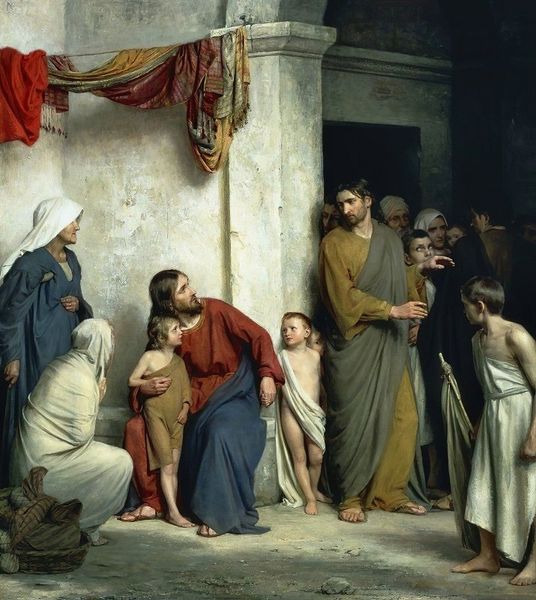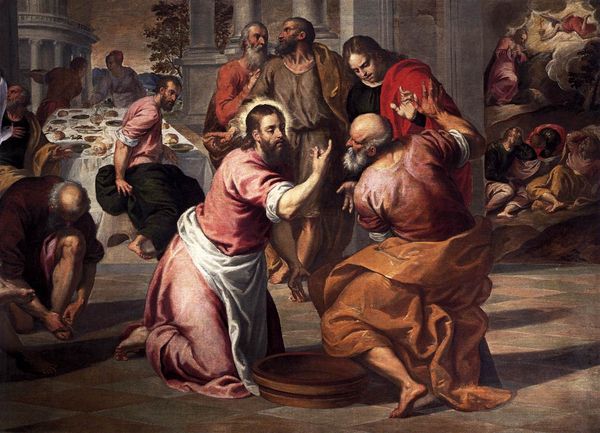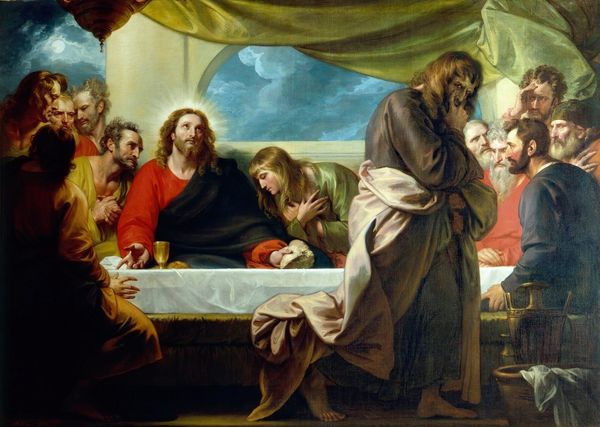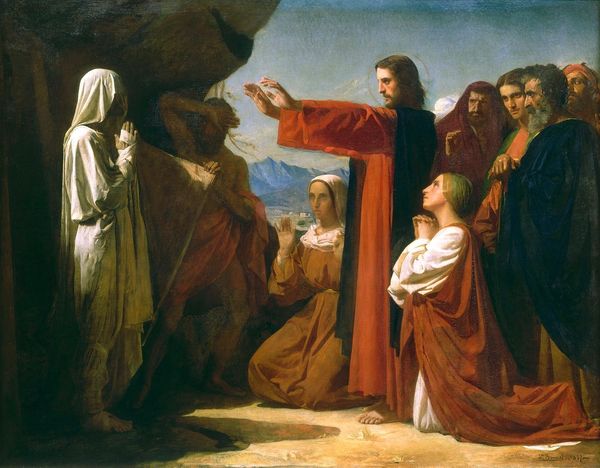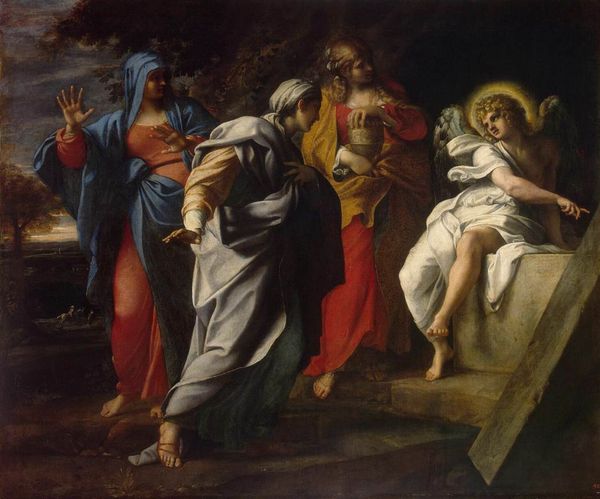
Caligula Depositing the Ashes of his Mother and Brother in the Tomb of his Ancestors 1647
0:00
0:00
painting, oil-paint
#
allegory
#
baroque
#
painting
#
oil-paint
#
figuration
#
history-painting
#
academic-art
Copyright: Public domain
Curator: Look at the somewhat mournful solemnity of this scene. Eustache Le Sueur’s "Caligula Depositing the Ashes of his Mother and Brother in the Tomb of his Ancestors" was completed in 1647 using oil paint. Editor: It’s immediately striking—cold and formal. There's such a sterile quality, despite the heavy subject matter of familial loss and forced burial. All the figures are draped, statuesque and somewhat detached from genuine mourning. Curator: It's a fascinating commentary on labor actually. Le Sueur, working within the academic tradition, is meticulously applying paint to canvas, carefully constructing an idealized version of antiquity that obscures the realities of both Roman rule and the 17th-century art world and its own patron context, as well. Editor: True, but beyond the obvious historical narrative, what about the political statement of power and control. Caligula, the emperor, is orchestrating a performance. The gaze is firmly on Caligula’s dominance over his family even in death and consider the costuming--all visually points to empire as performance. Curator: You're absolutely right to see this through that lens. The visual weight of the urn, the focus of all that material wealth used to produce it: Where do we see the impact of consumption in France during Le Sueur’s life? And is he simply echoing classical depictions, or subtly critiquing contemporary politics? Editor: Le Sueur, however unconsciously, has captured that intersection perfectly: a commentary on power and performance, painted within an equally theatrical social structure and art marketplace. Curator: Well, it makes you ponder the layers of making inherent in works like this; who was procuring and mixing the pigments, preparing the canvas—all labor usually removed from historical painting analysis. Editor: Exactly. Ultimately, by looking deeper, this initially sterile image offers potent points about power dynamics and questions about performance in 17th century European art.
Comments
No comments
Be the first to comment and join the conversation on the ultimate creative platform.
